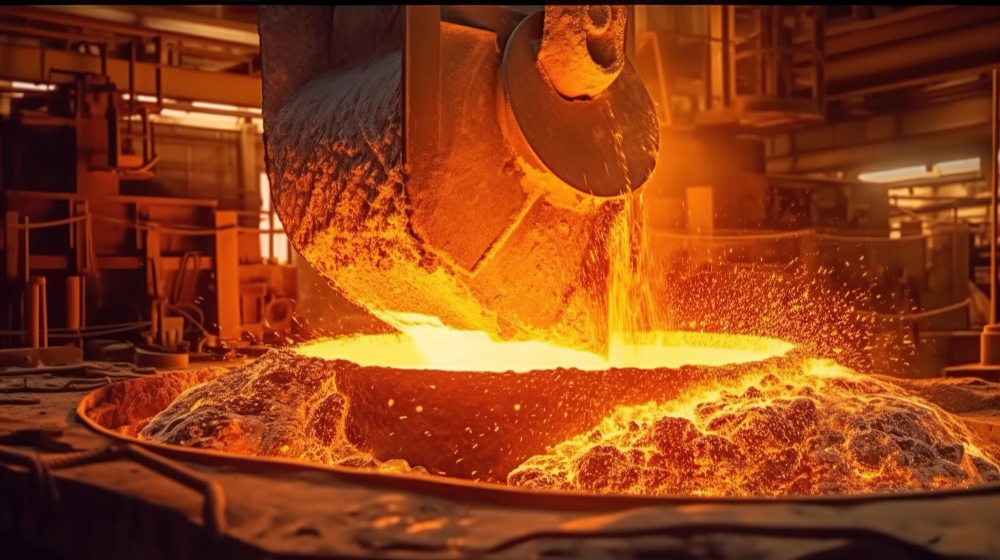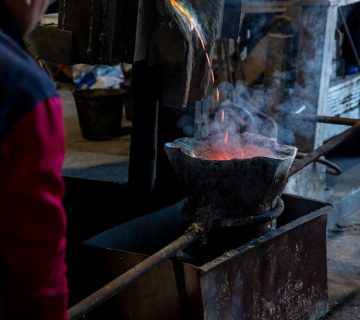Induction furnaces in metal casting and manufacturing processes are a very important context for this question, as this class of equipment provides an efficient and versatile means of heating and melting metals. Induction Furnaces: Working Principle, Types, Applications, Advantages, & Maintenance | Learn About Induction Furnace
What is an Induction Furnace?
Induction Furnace: Induction furnaces use electromagnetic induction to heat and melt metals. Hoses transmission without direct contact of the heating element with metal, which allows to generate heat using electromagnetic coils, creating electrical current inside the metal.
How does an induction furnace work?
Induction furnaces function on the principle of eddy current generation from the metal part present inside the furnace. When alternating current passes through the cooper coils (copper coils) wrapping the furnace chamber, a rapidly alternating magnetic field is produced. This creates a magnetic field in the metal itself, which creates electrical currents (known as eddy currents) that lead to resistive heating and melting of the metal.
Types of Induction Furnaces
There are different kinds of induction furnaces for different applications. Induction Furnace Types : Below the common induction furnace types.
- Coreless Induction Furnaces: In these type of furnaces there is no refractory lining, which lets the temperature change faster with easy maintenance.
- Channel induction furnaces have a channel or trough through which the metal flows, and they are generally used for applications where continuous melting and pouring are needed.
- These are the types of induction furnaces:Crucible Induction Furnaces For small-scale melting and holding operations, crucible induction furnaces use a crucible to contain the molten metal.
Different Applications for Induction Furnaces
Induction furnaces are a popular choice for metal casting and manufacturing processes, including:
- Steel foundries: The induction furnace finds extensive applications in melting and casting steel and other ferrous metals.
- Non-Ferrous Alloy Hawaii – These furnaces are used to melt and alloy non-ferrous metals such as aluminum, copper and bronze.
- Heat Treatment: Induction furnaces are used in heat treatment operations like annealing, hardening, and tempering of metals.
- Jewelry Making: Small crucible induction furnaces are used in jewelry making and precious metal casting.
Benefits of Induction Furnaces
Induction furnaces have many benefits over the conventional heating methods, such as:
- INDUCTION HEATING DESIGN — High Efficiency: The induction heating is an energy efficient way for precise temperature control with minimal heat dissipation.
- Induction Furnace AdvantagesRapid Heating: Induction furnaces can quickly raise metal to the desired temperature, which reduces processing time.
- Clean and Safe Process: Unlike heating with fuel, induction heating does not involve combustion, resulting in cleaner and safer operation.
- Versatile: Induction furnaces can melt a large variety of metals and alloys, making them versatile for different purposes.
Induction furnaces expert:
Induction furnaces are machines that require proper maintenance to function at their optimal level. Here are some of the key maintenance procedures for induction furnaces.
- Routine Inspection: Periodically check for wear and tear, loose connections, and signs of overheating.
- Just don’t forget about regular coil maintenance: check for cool or damaged coil insulation, that it isn’t arcing, etc. so that it can heat efficiently.
- Cooling System Maintenance: To prevent the components from instantaneously overheating, cooling systems should be maintained.
Conclusion
These are the article in details: What is an Induction furnace?
Induction furnace is an equipment used for melting metals with help of electromagnetic induction. Manufacturers can utilize induction furnace working principle, types, applications, advantages, and maintenance practices to use this technology to increase the efficiency and quality of production. Induction furnaces are an efficient and cost-effective solution for any heating or melting operation, whether you’re doing steel melting in a foundry or annealing metals in a heat treatment facility.



No comment